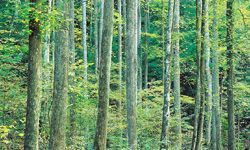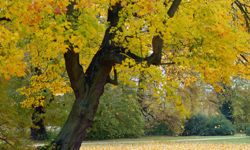Look almost anywhere, and you'll see things made from wood. It forms the furniture you sit on, the floor you walk on, the cabinets that store your dishes, the doors that secure your home, the frames that hold your treasured photos, the clock that chimes the hours, and perhaps even the trim in your car. Wood also has uses you don't see: the framing inside your home's walls and the pallets that store inventory for the stores where you shop.
According to the Unites States Department of Agriculture (USDA) Forestry Service, the U.S. demand for wood products is growing at twice the rate of the population [source: Northern Research Station]. In 2008, this translated into 10.7 billion board feet of U.S.-produced hardwood lumber [source: Associated Press]. And that's just the hardwoods.
Advertisement
Harvesting that much wood can have devastating effects on forests and surrounding environments. Irresponsible logging leads to deforestation, pollution of waterways from erosion runoff, and the removal of a major resource in the carbon cycle -- a whole forest of oxygen-producing, carbon dioxide-absorbing trees.
Fortunately, some of the hardwoods most popular for home improvement and woodworking projects are now grown and harvested sustainably, often domestically. The Forest Stewardship Council (FSC) recognizes more than 100 million acres (40,468,564 hectares) of forest in the United States and Canada that are managed to its environmental and social standards [source: FSC].
Sustainable hardwoods are harvested from forests managed to maintain a natural balance of tree and plant diversity. The harvesters also take pains to reduce the impact of the harvest by maintaining a buffer of trees around waterways and reseeding areas damaged by the lumbering equipment. That's good news. But lumber producers must do even more to earn FSC certification for their products. They must document the journey of the lumber from forest to retail shelves with a chain-of-custody paper trail to prove that the wood was harvested legally from a certified sustainable forest.
In this article, we'll look at the qualities and uses of five sustainable hardwoods. Since buying locally makes sense environmentally and economically, we'll also look at where each type of wood grows.

